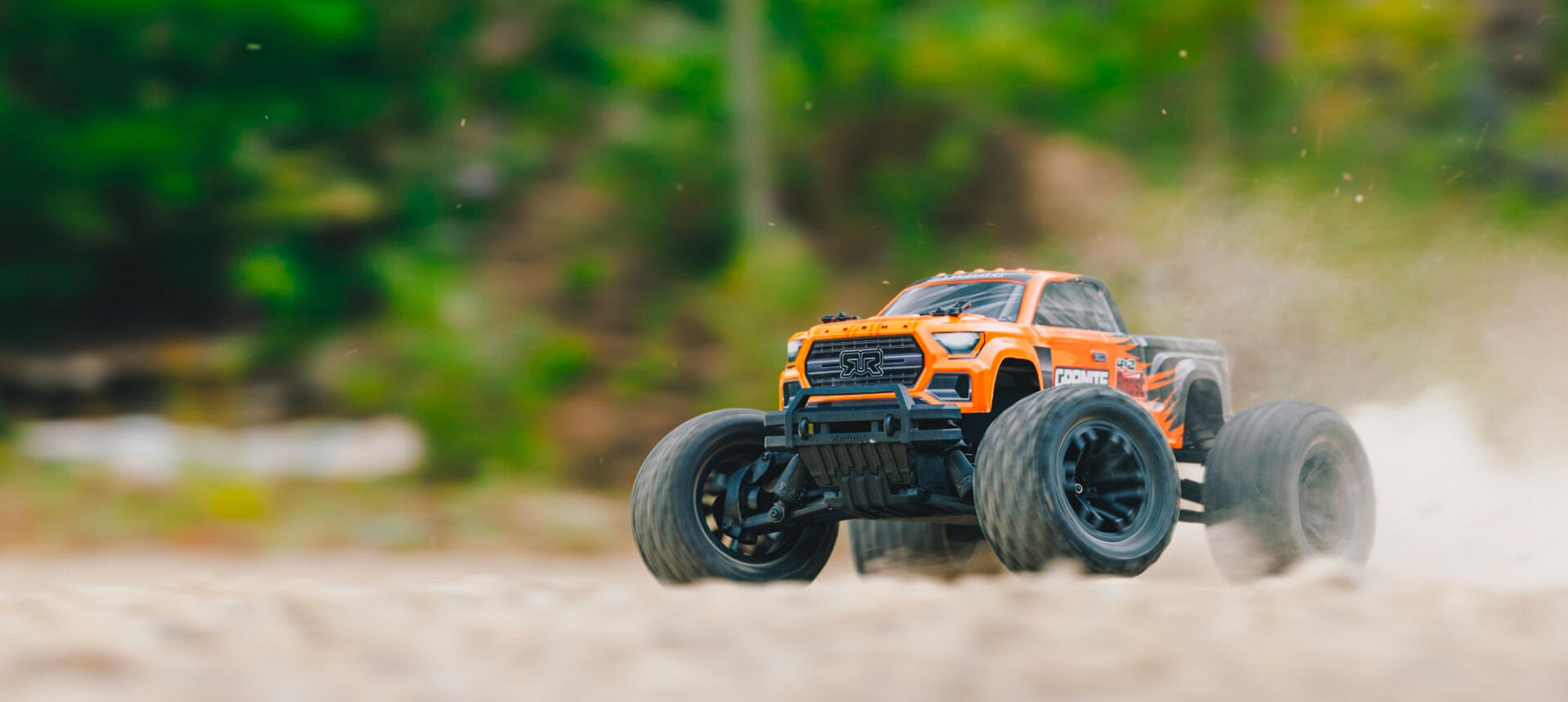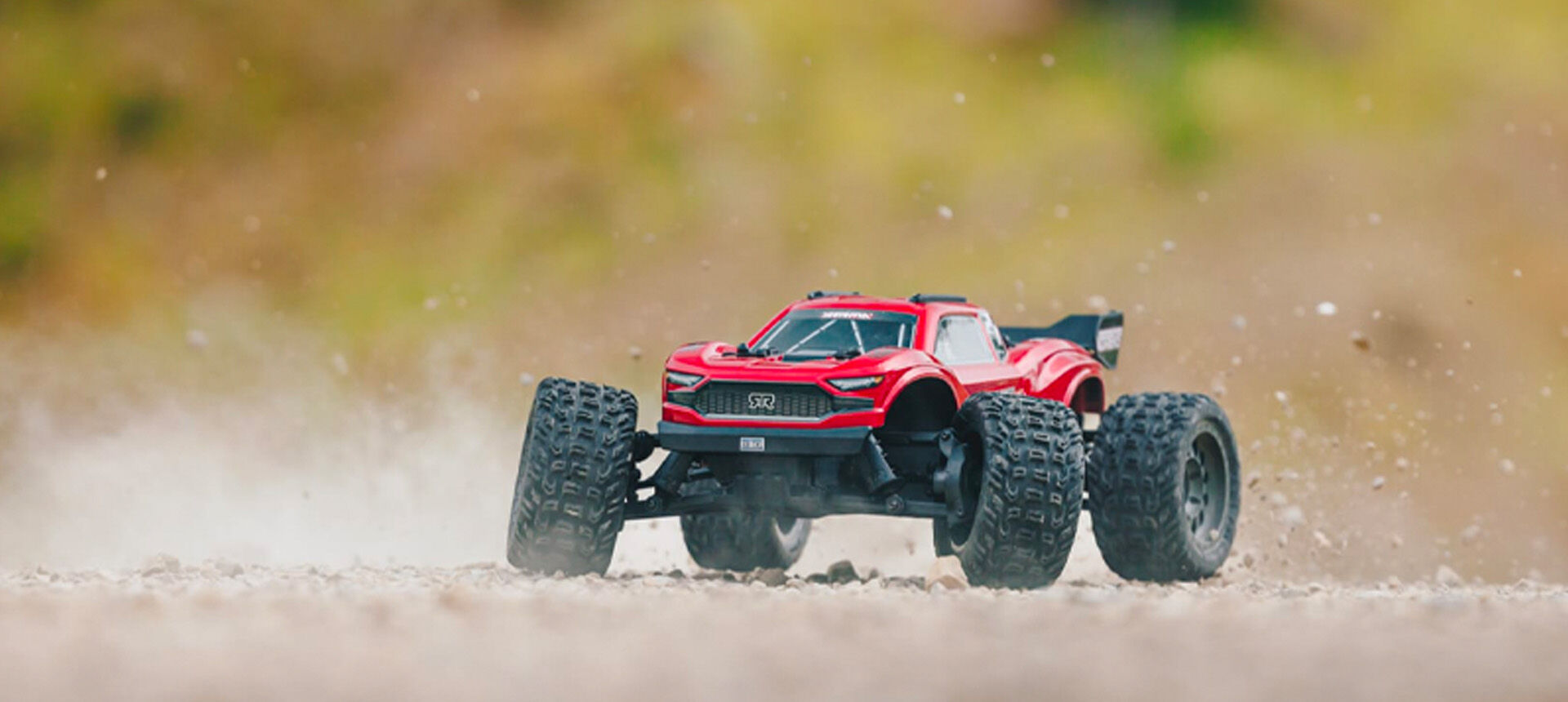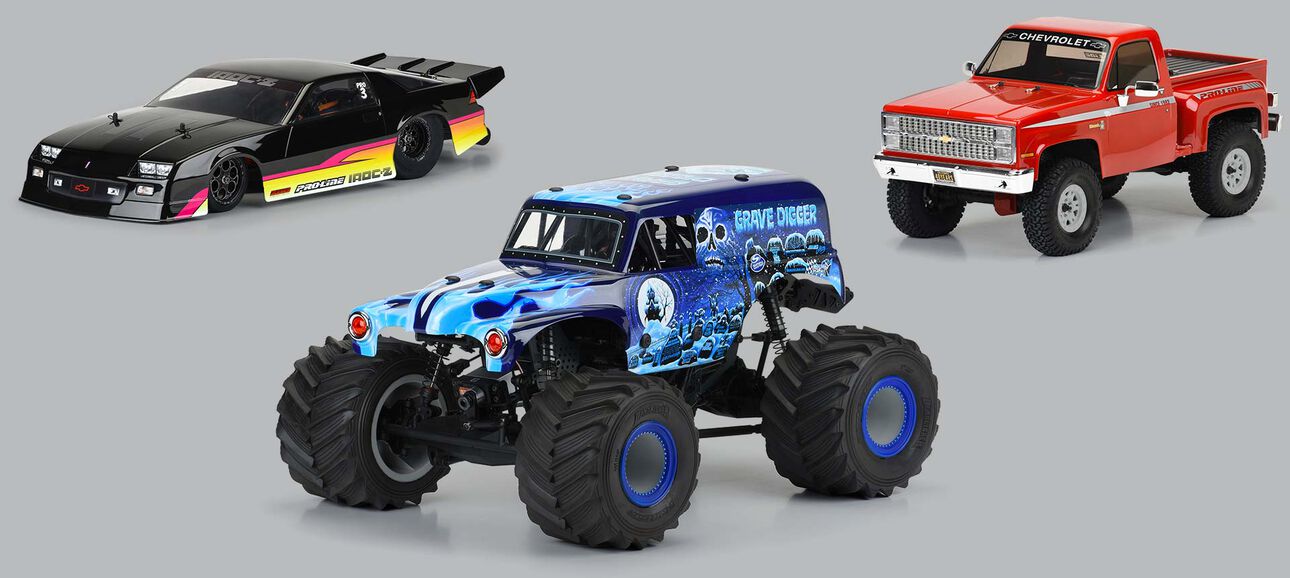
Tune Your RC Suspension Setup for Better Handling
Posted: 8/19/25
Proven Tips for RC Suspension Tuning
One of many advantages that hobby-quality radio control vehicles have over department store toys is that you don’t always have to run them exactly the way they came out of the box. With some practice and experience, you can make your own adjustments to their design and improve the performance on your own favorite racing and bashing surfaces.
For example, if your RC vehicle is engineered to go fast on asphalt, with the right RC suspension setup you can help it to go even faster. If you’re a basher, you can tune the suspension for making higher jumps.
We’ve collected some proven RC suspension tuning tips from expert drivers to share in this article. But first, let’s take a look at what your remote control vehicle’s suspension does and how each component works.
The basics of an RC suspension
The main job of an RC suspension setup is to absorb the inevitable bumps and jolts that happen while driving over uneven terrain. The suspension helps the tires keep their grip on the ground, maximizing traction while the vehicle accelerates, corners, and brakes. It also improves the RC car’s handling by increasing stability at high speeds and through turns.
Several parts of your RC car suspension can be fine-tuned to improve performance. The shocks, shock springs, and suspension arms all offer RC suspension tuning opportunities to create your perfect setup.
Shock absorbers control the movement of the suspension. As an RC vehicle travels over uneven surfaces, the shocks compress with enough resistance to absorb jolts and keep the vehicle from bouncing.
They can be oil-filled for more precise damping or equipped only with springs. Shock springs come in different rates, or degrees of stiffness. With softer springs, an RC car has more suspension travel for greater adaptability to uneven terrain. With stiffer springs, the handling is more responsive and precise — better for smooth tracks and aggressive maneuvering.
The suspension arms of an RC vehicle connect the wheels to the chassis and directly influence stability, handling, wheel alignment, and tire contact with the ground. The length and design of the arms affect how the car responds to different driving conditions. Shorter suspension arms accommodate more aggressive handling, while longer arms increase stability and predictability.
RC suspension tuning with shock adjustments
It’s relatively easy to improve your RC car or truck’s traction and handling by tuning its shocks. That can be accomplished simply by changing the oil weight or spring rates or by moving the shock mounting positions. With proper tuning, you’ll see better performance while turning, braking, and driving on different surfaces and in different weather conditions.
Shock Oil
Shock oil weight describes the thickness of the fluid inside of a shock. It’s expressed in units such as 20wt, 30wt, or 50wt. The higher the number, the thicker and heavier the oil.
A thicker oil increases resistance, slowing the travel of the piston in the shock. A thinner oil allows it to move more quickly. If the piston encounters too little resistance, the car may “bottom out” — meaning that the bottom of its chassis could hit the ground. But if the piston moves too slowly, the suspension won’t sufficiently absorb impacts. As a result, the RC car will bounce when going over bumps and its tires will lose traction.
Generally, thicker shock oil is best when there are bumps and jumps in the driving surface. You should choose a thinner oil when the surface is relatively smooth. That will let the shocks react quickly to soak up smaller bumps and imperfections.
It’s also important to consider temperature when you’re choosing shock oil for your RC suspension setup. Thicker oil is better in hot weather, while thinner oil is preferable in cold weather. If you’ve found a setup that works well for you in warm conditions, you may still need to switch to thinner shock oil in cold weather to maintain the same RC suspension tuning characteristics, and vice-versa.
Shock Springs
Shock springs support the weight of your RC vehicle. The choice of spring rate (or stiffness) goes hand-in-hand with the shock oil weight you use. If you use heavy oil, you’ll want to use heavy springs. Combining heavy oil with light springs will still allow the spring to compress when your RC car hits a bump, but the spring may not be able to extend the strut again quickly enough before you hit another one.
If you decide to change your RC suspension setup with different shock springs, be sure to change both the front and the rear springs at the same time for balance. You can also use shock spacers as another way to tune your suspension. Shock spacers fit inside the shock, raising the ride height and increasing the compression resistance.
RC suspension tuning through shock mounting position
Another method of tuning your RC suspension setup involves adjusting the mounting positions of the shocks on the suspension arms. Depending on where you position the shocks relative to the arm’s pivot points, you can adjust handling by influencing the roll center, steering response, and bump absorption.
Moving the shock mounting point inwards on the suspension arm creates a softer, more bump-absorbing feel. Moving it outwards increases stability and sharpens the cornering response. For a more detailed look at the effects of shock mounting positions, read on.
How shock mounting adjustments influence your RC suspension setup
Let’s examine the front shock mounts first, starting with the top mounting position.
The farther out (away from the chassis center) that you mount the top of your front shocks, the more stability you’ll create. This is the preferred position for high-grip tracks. Using the outermost mounting position will give your RC vehicle the sharpest steering and fastest shock response. Mounting the top of your front shocks closer to the center creates a softer suspension feel that’s better for rough, bumpy tracks. The innermost mounting holes provides the smoothest shock response but sacrifices some steering response.
Where you choose to mount the bottom of your front shocks is pretty much all about cornering. The innermost mounting positions will heighten the vehicle’s low-speed steering. Using the outer holes improves high-speed cornering ability.
Now let’s look at the effects of the rear shock mounting positions on your RC suspension setup. They not only influence the vehicle’s steering response, but also its handling and launch characteristics.
The outer mounting holes for the tops of your rear shocks lend themselves to more steering and faster suspension reaction. The innermost holes are preferable if you want to increase rear traction and enjoy smoother rides over rough terrain.
You have even more options for tuning your steering through your choice of lower rear shock mounting position. The inner mounting holes provide smooth shock response with less steering. The outer holes increase the steering sharpness while offering somewhat less control in rough conditions.
A final thought on RC suspension tuning
When tuning your RC suspension setup, balance is key. Make sure that your suspension adjustments are carefully balanced between the front and the rear of your RC car. That’s essential for maintaining your vehicle’s proper handling characteristics.
All it takes is a little experience to become familiar with what RC suspension adjustments will give your vehicle the best performance on any racing or bashing surface. Before long, you’ll be tuning your model just like a pro!
Shop the Story

Words by Wally Armstrong
Wally has been writing about the RC hobby since 1987, when he was hired by Hobbico as a Copywriter after completing his master’s degree in English in 1983 and teaching for several years. He managed the Hobbico copywriting team until 2018, when Horizon Hobby purchased the company and brought him on board as a Senior Copywriter. Wally especially enjoys getting a first look at new Horizon RC products from the Product Development teams – and having the privilege of sharing details about their innovations with RC hobby customers.
Related Articles

RC Cars for Sale
Looking for a fast RC car? Wondering which RC car is the fastest on different terrain? We've got all the details here in our Buyer's Guide for fast RC cars, trucks, buggies, and more!
Learn More

BOOST Your ARRMA RC Basher – The Best RC Upgrades
The ARRMA BOOST line are beginner-friendly RC trucks ready for bashing now and can easily be upgraded later. ARRMA BOOST are some of the easiest for the best RC upgrades!
Learn More

How to Choose the Right 1/10 Scale RC Body
Not every 1/10 scale RC body is the same size, so follow these tips to be sure it will fit your 1/10 scale car.
Learn More